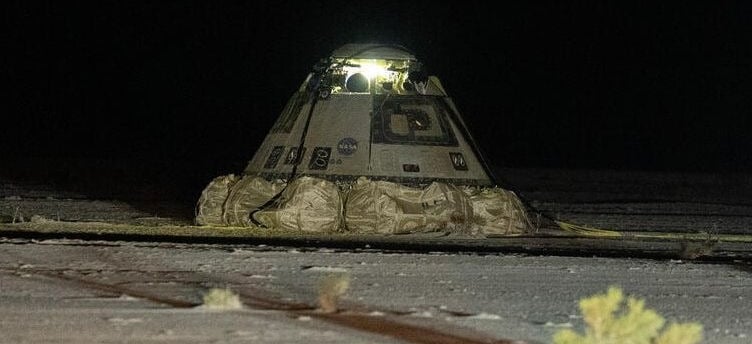Boeing Starliner capsule lands back on Earth, without astronauts, to end troubled test flight
The Boeing Starliner capsule successfully lands back on Earth at White Sands Space Harbor in New Mexico after a troubled test flight mission without the astronauts onboard. Learn more about the mission here.
BOEING
9/8/20242 min read


Boeing's Crew Flight Test Starliner spacecraft sits at its desert landing spot at White Sands Space Harbor, New Mexico after a successful landing on Sept. 7, 2024. (Image credit: Boeing)
Washington: This week, the aerospace community celebrated a significant achievement as the Boeing Starliner spacecraft successfully completed its mission and returned to Earth. This momentous event marks a major milestone in the development of commercial crew transport systems, advancing NASA's goals for sustained human space exploration.
The Mission
The Boeing Starliner launched from the Cape Canaveral Space Force Station, carrying a range of scientific experiments and essential cargo to the International Space Station (ISS). Throughout the mission, the spacecraft demonstrated its capabilities in autonomous operation, docking, and undocking maneuvers, which are crucial for future crewed missions. With the mission's success, Boeing continues to fine-tune its spacecraft in preparation for upcoming manned flights.
The Iconic Landing
On a pitch-black night, the Starliner touched down smoothly at White Sands Missile Range in New Mexico. Utilizing a combination of parachutes and airbags for a controlled descent, the landing itself showcased the robust engineering and safety features integrated into the spacecraft. The successful reflection of the mission was evident in the flawless execution of its re-entry and landing procedures.
Looking Ahead
With the successful conclusion of this mission, Boeing has confirmed its progress towards launching crewed missions aboard the Starliner. The insights gained from this mission will be instrumental in refining the spacecraft's systems to ensure the safety and reliability of future astronauts. NASA and Boeing's partnership continues to be a crucial element in the ongoing efforts to expand human presence in space.
As we anticipate the next steps in Boeing's journey, the aerospace industry and space enthusiasts alike eagerly await the day when Starliner will carry its first human passengers, contributing to the broader vision of sustained and safe space exploration.
Conclusion
The safe return of the Boeing Starliner underscores the remarkable advancements in space travel technology and the relentless dedication of the teams involved. This accomplishment not only sets the stage for future missions but also solidifies Boeing's role as a key player in the realm of commercial crew transportation. As we look to the stars, the success of the Starliner mission serves as a reminder of the incredible potential and bright future of human space exploration.
